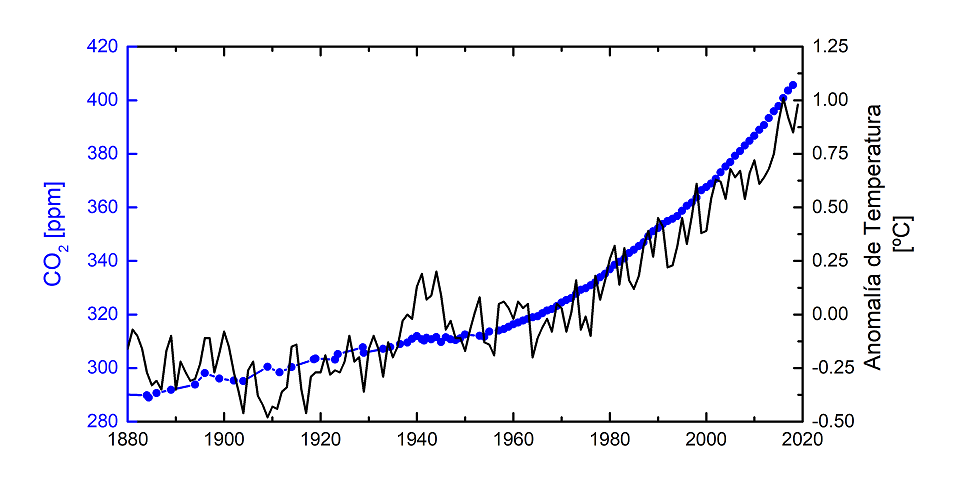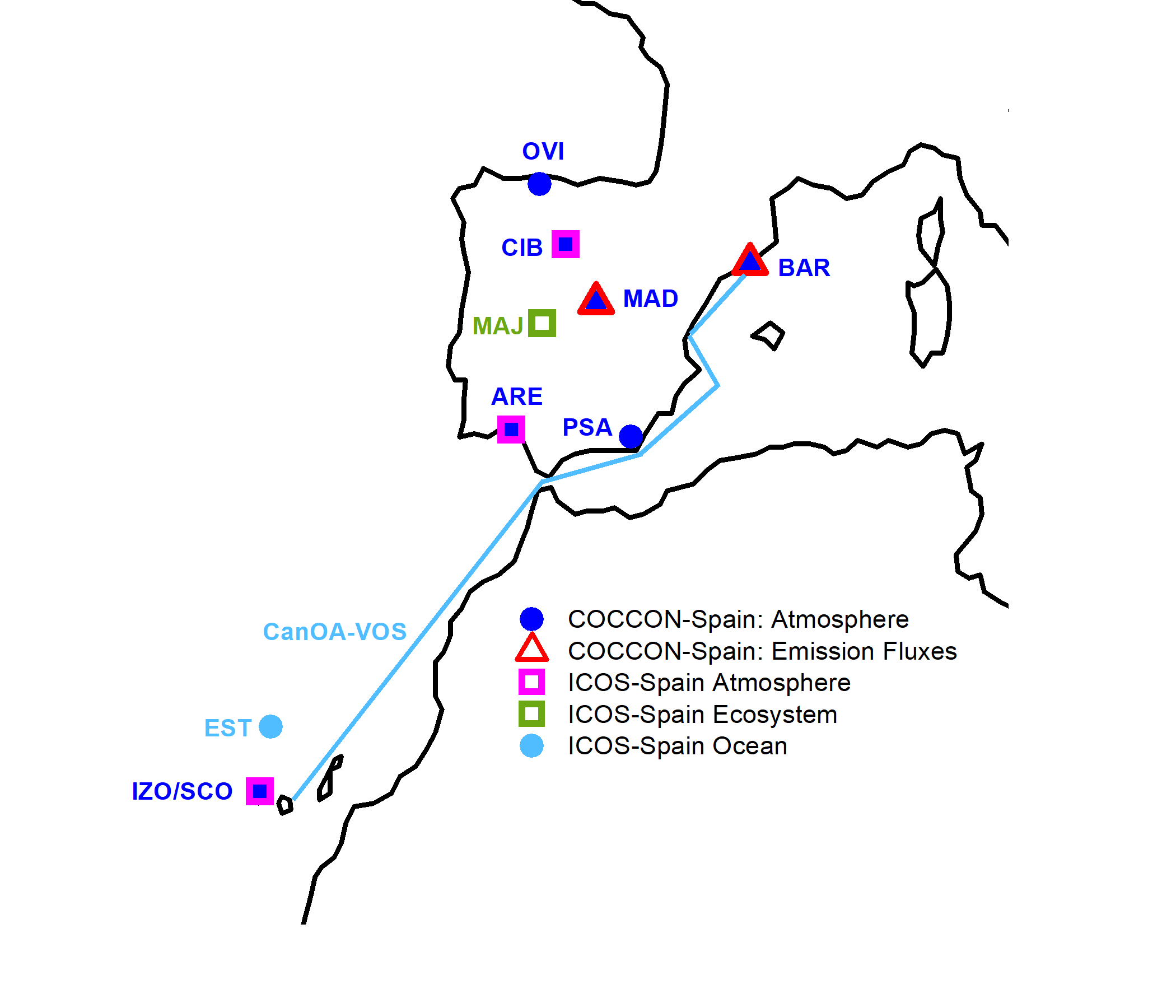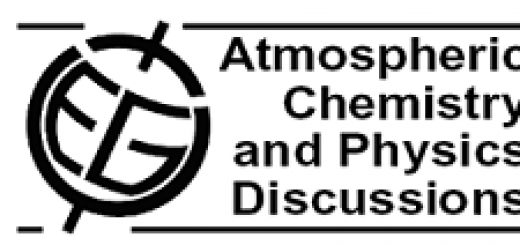COCCON-Spain: Toward an Integrated Greenhouse Gas Observation System in Spain
Omaira García1, Noémie Taquet2, Eliezer Sepúlveda2, Ramón Ramos1 y Carlos Torres1
1Agencia Estatal de Meteorología, Centro de Investigación Atmosférica de Izaña (CIAI), Tenerife
2TRAGSATEC, Madrid
Clic here for spanish version
Greenhouse Gases and Global Warming
Different meteorological observations and records worldwide unequivocally indicate that the average global temperature has increased by 1°C in the last century, with a rapid acceleration since the 1980s. This warming is neither spatially nor temporally uniform, with particularly vulnerable areas such as high mountain regions or those near the Arctic experiencing temperatures that double the global average, reaching over 3°C in winter months. The scientific consensus is nearly unanimous, as reflected in various scientific-technical reports produced by the Intergovernmental Panel on Climate Change (IPCC) since its establishment in 1988 by the World Meteorological Organization (WMO) and the United Nations Environment Programme (UNEP). These reports suggest, on one hand, the unequivocal warming of the climate system, primarily induced by human activities, and, on the other hand, emphasize the need to substantially and sustainably reduce atmospheric emissions of greenhouse gases (GHG), identified as the main drivers to the observed warming [IPCC, 2022].

Figure 1: Time series (1880-2020) of the global average atmospheric concentration of carbon dioxide (CO2) and the atmospheric temperature anomaly.
The cuasi-linear relationship observed from the preindustrial era to the present between the increase in global temperature and the accumulated emissions of carbon dioxide (CO2), the primary greenhouse gas, leaves no room for doubt (Figure 1). Similarly to the rise in temperature, the atmospheric concentration of CO2 has increased from just under 300 parts per million (ppm) in the preindustrial era to currently surpassing 400 ppm globally, although regional values are higher. Continuous records from background stations (in very clean atmospheric conditions) of the Global Atmospheric Program (GAW) – WMO, such as the Observatory of Izaña in Tenerife (Spain) or Mauna Loa in Hawaii (USA), simultaneously show that CO2 levels have already exceeded 423 ppm in the spring of 2023. These unprecedented records in the last 3 million years will be broken each spring in the coming years, leading to an increasingly rapid rise in our planet’s temperature. According to the latest IPCC report [IPCC, 2022], 450 ppm is the threshold at which we should restrict the atmospheric CO2 concentration to limit global warming to below 2°C in this century compared to the preindustrial era. This is in line with the Paris Agreement, adopted in 2015, which represents an unprecedented global commitment to keep the global temperature increase during this century below 2°C compared to preindustrial levels.
Greenhouse Gas Observation Systems
In this context, it is crucial to establish networks for monitoring the various components of the climate system, specifically GHG, identifying emission sources and their magnitude, and determining the system’s response to these additional inputs. Furthermore, these measures are indispensable for obtaining more accurate estimates of climate change projections, thus forming the foundation for the development of effective and efficient policies for climate change mitigation and adaptation.
Currently, globally, there are several ground-based programs and networks that collect and archive various atmospheric observations of key GHGs: point concentrations, isotopes, and turbulent fluxes (GAW, ESRL, and ICOS-ERIC,total amounts in the atmospheric column (TCCON, NDACC, and COCCON ,and balloon-based vertical profiles (Air-Core). However, as highlighted in the latest report from the European Commission within the context of the Monitoring & Verification Support (MVS) system for monitoring anthropogenic carbon dioxide (CO2) emissions, which is being designed and developed by Copernicus and known as the Green Report [Pinty et al., 2019], these networks do not meet all the operational requirements for the Copernicus CO2MVS system due to a lack of observations in urban/industrial areas and other significant emission sources. In particular, the CO2MVS system prioritizes having ground-based measurements at the European level of the CO2 column, as well as other trace gases, to validate observations from the future space component of Copernicus (Copernicus Sentinels CO2 Monitoring Constellation). These measurements are also crucial for various ongoing satellite missions focused on greenhouse gases (EUMETSAT/IASI, ESA/Tropomi, NASA/OCO-II, NASA/OCO-III, JAXA/GOSAT).
At a nacional scale, there is an observational gap in atmospheric concentrations of key GHG. The only station currently contributing continuously to internationally recognized monitoring programs and networks is the Izaña Atmospheric Observatory (IZO), managed by the Izaña Atmospheric Research Center (CIAI), part of the State Meteorological Agency (AEMET). IZO has an extensive GHG observation program, having been part of the World Meteorological Organization’s (WMO) GAW program since 1982, ESRL-NOAA since 1991, NDACC, TCCON, and COCCON networks since 1999, 2007, and 2018, respectively, and ICOS-ERIC since May 2023. Since 2021, AEMET coordinates Spanish activities and contributions to ICOS-ERIC, which aims to monitor GHGs and carbon cycle-associated gases across Europe and adjacent oceans. Within the Spanish node of ICOS-ERIC (ICOS-Spain), the El Arenosillo Experimentation Center (CEDEA), under the National Institute of Aerospace Technology (INTA), is the only station currently in the process of accreditation as an atmospheric station.
COCCON-Spain
The national network COCCON-Spain aims to address the existing gap in atmospheric greenhouse gas observations in Spain by implementing a network of stations for GHG measurements at a national scale. This initiative, coordinated by AEMET, is part of the project to modernize observation networks and digitize production processes for the development of intelligent meteorological services in the context of climate change (C05.I03.P51). It is integrated into the Recovery, Transformation, and Resilience Plan (PRTR) of the Spanish Government, to be funded with the funds approved by the European Council on July 21, 2020, to address the consequences of the international COVID-19 pandemic.
The COCCON-Spain network will initially consist of twelve stations for measuring key GHG, and potential locations are shown in Figure 2. These locations have been selected based on their placement in major urban/industrial greenhouse gas emission zones (e.g., Madrid and Barcelona) as well as background environments, under different surface reflectance conditions for possible satellite measurement validation (e.g., CEDEA-INTA, the Solar Platform of Almería, CIBA, IZO, or the Observatory of Santa Cruz de Tenerife). Additionally, efforts have been made to ensure they cover a geographically homogeneous distribution, representative of the maximum latitudinal gradients in Spain.
As highlighted in the scientific report from the In Situ Expert Group of EIONET of the European Environment Agency [Matthews et al., 2020], monitoring urban areas is critical because, on one hand, they are particularly vulnerable to air pollution, extreme weather events, and the effects of climate change. On the other hand, urban areas are currently major sources of greenhouse gas emissions, concentrating approximately 70% of CO2 emissions and up to 50% of global greenhouse gas emissions. This report also reviews the different measurement techniques currently available for greenhouse gas monitoring, emphasizing the key role of Fourier-transform infrared spectroscopy, which will be employed by COCCON-Spain. Therefore, as mentioned earlier, COCCON-Spain also includes monitoring greenhouse gas emission flows (not just atmospheric concentrations) in key areas, such as the metropolitan areas of Madrid and Barcelona. Additional instrumentation is planned to be installed in these cities, outlining the metropolitan areas for estimating their corresponding emissions.
COCCON-Spain will have hybrid stations combined with the national node of the ICOS-ERIC research infrastructure and associated projects (Figure 2), aiming to establish the foundation for a permanent and consolidated greenhouse gas observation system at the national level. Thus, COCCON-Spain will significantly enhance national atmospheric composition observation systems, incorporating essential climate variables for monitoring and studying the climate system and preventing climate risks. Additionally, it can be used to feed dynamic and statistical numerical models that generate future climate change projections. Improving our current knowledge of greenhouse gas sources and sinks in Spain has direct implications for the development and establishment of national strategies for climate change mitigation and adaptation.

Figure 2. Distribution of potential stations in the COCCON-Spain network (in blue and red): IZO (Izaña Atmospheric Observatory), SCO (Santa Cruz de Tenerife Observatory), ARE (El Arenosillo Experimentation Center), PSA (Solar Platform of Almería), CIB (Lower Atmosphere Research Center), MAD (Madrid), BAR (Barcelona), and OVI (Oviedo). In magenta, green, and light blue, stations that are part of ICOS-Spain in the atmospheric, ecosystem, and oceanic segments, respectively.
References
IPCC, Climate Change 2022: Impacts, Adaptation, and Vulnerability. Contribution of Working Group II to the Sixth Assessment Report of the Intergovernmental Panel on Climate Change [H.-O. Pörtner, D.C. Roberts, M. Tignor, E.S. Poloczanska, K. Mintenbeck, A. Alegría, M. Craig, S. Langsdorf, S. Löschke, V. Möller, A. Okem, B. Rama (eds.)]. Cambridge University Press. Cambridge University Press, Cambridge, UK and New York, NY, USA, 3056 pp., doi:10.1017/9781009325844, 2022.
Matthews, B., O. E. García, E. Cuevas, W. Spangl, and P. Castro: Report on how EIONET and EEA can contribute to the urban in situ requirements of a future Copernicus anthropogenic CO2 observing system, European Environment Agency (EEA) – Negotiated procedure No EEA/IDM/R0/17/008, 2020.
Pinty B., P. Ciais, D. Dee, H. Dolman, M. Dowell, R. Engelen, K. Holmlund, G. Janssens-Maenhout, Y. Meijer, P. Palmer, M. Scholze, H. Denier van der Gon, M. Heimann, O. Juvyns, A. Kentarchos and H. Zunker, An Operational Anthropogenic CO₂ Emissions Monitoring & Verification Support Capacity – Needs and high level requirements for in situ measurements, doi: 10.2760/182790, European Commission Joint Research Centre, EUR 29817 EN, 2019.
*This news was published on December 21, 2023 by aemetblog: https://aemetblog.es/2023/12/21/coccon-espana-hacia-un-sistema-integrado-de-observacion-de-gases-de-efecto-invernadero-en-espana/).







